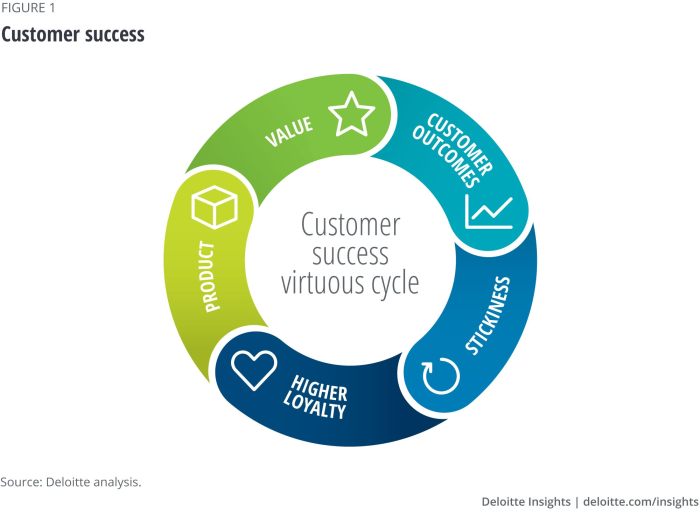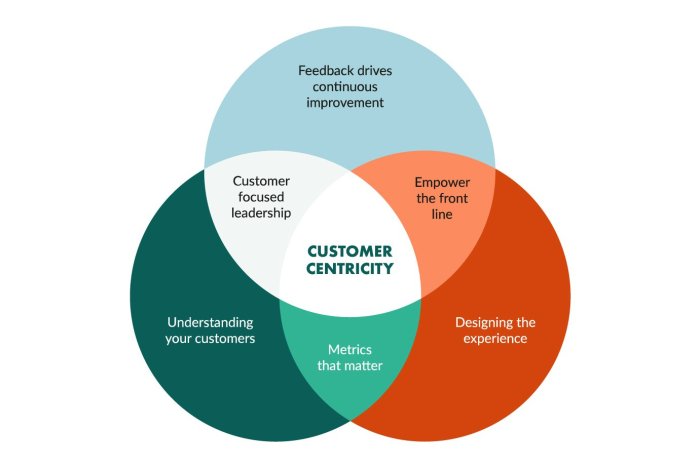Building a Customer-Centric Brand Strategy takes center stage as we dive into the world of business success, customer loyalty, and effective strategies with an effortless cool vibe.
Get ready to explore the key elements that make brands stand out by putting customers first.
Importance of Customer-Centric Brand Strategy

Building a customer-centric brand strategy is essential for business success as it focuses on meeting the needs and preferences of customers, ultimately leading to increased satisfaction and loyalty.
Examples of Successful Companies
- Apple: Apple’s customer-centric approach, evident in its user-friendly products and exceptional customer service, has led to a strong brand following and high customer loyalty.
- Zappos: Zappos is known for its unwavering commitment to customer satisfaction, offering free shipping and returns, as well as 24/7 customer support, which has resulted in a loyal customer base.
Impact on Brand Loyalty and Customer Retention
A customer-centric approach not only enhances brand loyalty but also improves customer retention rates. By consistently meeting customer needs and expectations, businesses can foster long-term relationships with their customers, leading to repeat purchases and positive word-of-mouth referrals.
Understanding Customer Needs
When it comes to building a customer-centric brand strategy, understanding the needs and preferences of your target audience is crucial. By researching and empathizing with your customers, you can tailor your brand strategies effectively to meet their expectations.
Researching Customer Preferences and Pain Points
Before you can create a successful brand strategy, you need to delve deep into the minds of your customers. Here are some methods for researching and understanding customer preferences and pain points:
- Conduct surveys and interviews to gather direct feedback from customers.
- Analyze customer data and behavior patterns to identify trends and common pain points.
- Monitor social media channels and online reviews to gauge customer sentiment and opinions.
Creating Customer Personas
One effective way to tailor your brand strategies is by creating customer personas. These are fictional representations of your ideal customers based on real data and research. Here’s how you can create customer personas:
- Segment your target audience based on demographics, behaviors, and preferences.
- Give each persona a name, background story, and specific goals and challenges.
- Use these personas to guide your marketing and branding decisions, ensuring they resonate with your target audience.
Collecting Customer Feedback and Implementing Changes
Customer feedback is invaluable when it comes to improving your brand strategy. Here’s why collecting feedback and implementing changes based on it is crucial:
“Listening to your customers can help you identify areas for improvement and enhance customer satisfaction.”
- Encourage customers to provide feedback through surveys, reviews, and customer support interactions.
- Analyze feedback data to identify recurring issues or suggestions for improvement.
- Implement changes based on customer feedback to show your audience that their opinions are valued and taken seriously.
Implementing Customer-Centric Initiatives

In order to align all aspects of a business with a customer-centric approach, it is essential to implement the following steps and strategies to foster a customer-centric culture within the organization.
Aligning Business with Customer-Centric Approach, Building a Customer-Centric Brand Strategy
- Conduct market research to understand customer preferences and needs.
- Create customer personas to personalize marketing and product development.
- Implement feedback mechanisms to gather insights from customers regularly.
- Train employees at all levels to prioritize customer satisfaction in their roles.
Fostering a Customer-Centric Culture
- Empower employees to make decisions that benefit the customer experience.
- Reward and recognize employees who go above and beyond to serve customers.
- Create a collaborative work environment where teams work together to solve customer issues.
- Encourage a customer-first mindset in all internal communications and meetings.
Role of Leadership in Driving Customer-Centric Initiatives
- Set the tone by demonstrating a commitment to customer satisfaction in all actions.
- Invest in training programs for leaders to understand the importance of a customer-centric approach.
- Hold leaders accountable for implementing customer-centric strategies and initiatives.
- Communicate the vision of becoming a customer-centric organization to inspire employees.
Measuring Success and Adjusting Strategies: Building A Customer-Centric Brand Strategy
In order to track the effectiveness of a customer-centric brand strategy, it is crucial to establish key performance indicators (KPIs) that can provide valuable insights into how well the strategy is performing.
Key Performance Indicators (KPIs)
- Customer Satisfaction Scores: Monitoring customer feedback and satisfaction levels can indicate how well the brand strategy is resonating with the target audience.
- Customer Retention Rates: Tracking the percentage of customers who continue to engage with the brand over time can show the loyalty and effectiveness of the strategy.
- Net Promoter Score (NPS): Calculating the likelihood of customers recommending the brand to others can measure the overall satisfaction and advocacy generated by the strategy.
Analyzing Customer Data
- Utilize Customer Relationship Management (CRM) tools to gather and analyze data on customer interactions, preferences, and behaviors.
- Segment customers based on demographic, psychographic, and behavioral factors to tailor strategies and communications effectively.
- Employ data analytics and visualization tools to identify trends, patterns, and insights that can guide informed decision-making.
Continuous Monitoring and Evolution
- Regularly collect and review customer feedback through surveys, reviews, and social media interactions to understand changing needs and expectations.
- Stay updated on industry trends, competitive landscape, and technological advancements to adapt strategies proactively.
- Implement agile methodologies to quickly test, learn, and iterate strategies based on real-time feedback and performance metrics.












